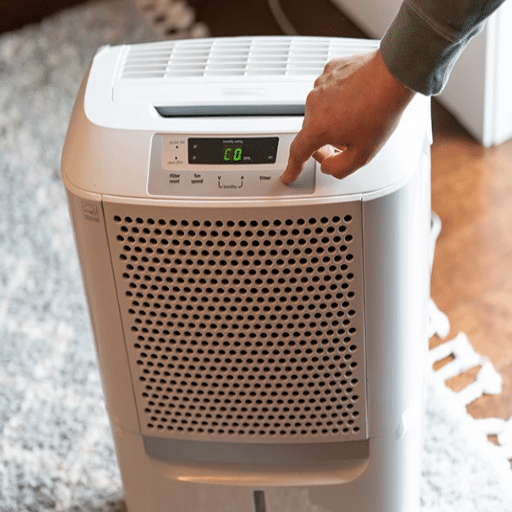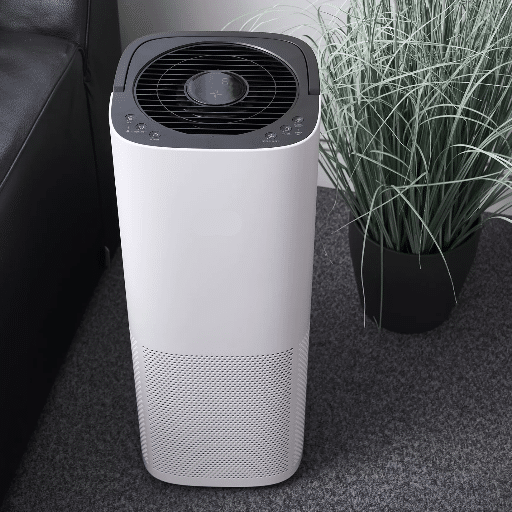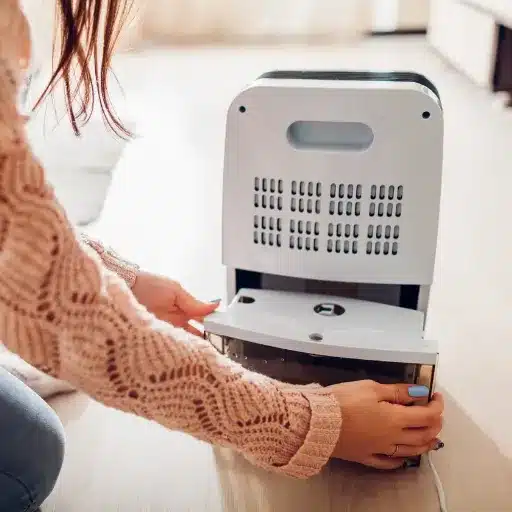The air quality and the build-up of moisture caused by using a bathroom must be controlled with proper ventilation. This can be achieved using an extractor fan or a dehumidifier. Although both appliances provide a similar outcome of reducing moisture levels, each uses a different technology with advantages and disadvantages. This article will focus on how each appliance functions, its use, and its efficiency compared to the other. Understanding the strengths and weaknesses of an extractor fan and a dehumidifier will lead you to choose the system that best fulfills your ventilation criteria.
What’s the difference between a bathroom dehumidifier and an exhaust fan?
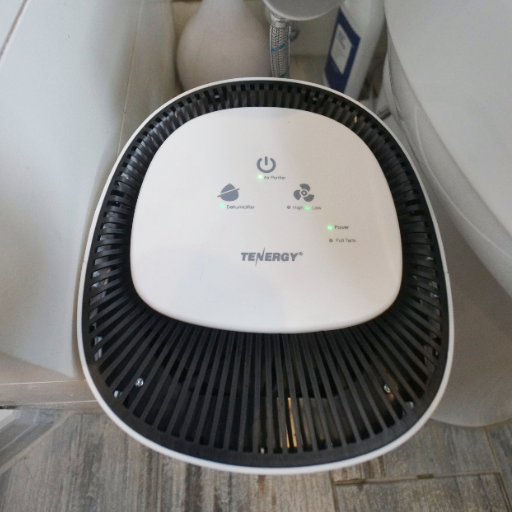
Bath exhaust fans and dehumidifiers have different roles in humidity and air quality control. A bathroom dehumidifier lowers the humidity by moisture extraction through a refrigeration process or a desiccant. This equipment is suitable for moist and poorly ventilated bathrooms. Instead, an exhaust fan removes stale air, which is wet to the outside, improves airflow, and prevents condensation. While exhaust fans help control humidity while taking a bath, they may not substantially reduce humidity in bathrooms with poor ventilation. The selection is made according to your bathroom’s needs, and dehumidifiers are used when you need to control moisture and exhaust fans when you require ventilation.
How does a bathroom dehumidifier work?
A dehumidifier removes excess moisture from the air to keep the mold away and reduce bathroom dampness, retaining optimal humidity levels. The device employs a fan to pull in humid air, passing through cold coils that convert the moisture into water vapor. Depending on the model, This water is drained through a hose or collected in a reservoir. After condensation, the air is heated and released back into the room, further drying the environment. Unlike extractors, dehumidifiers function nonstop, making them perfect for places with persistent humidity issues or limited ventilation, like bathrooms.
What’s the function of an exhaust fan?
Dehumidifying extracts are ineffective in removing all penetrable airborne particles, odors, and other humid air from the bathroom, unlike exhaust, which eliminates. Both devices single-handedly work better together as expelling air removes indoor moisture and eventually stops mold and mildew from growing. It fosters a healthier atmosphere by maintaining moisture and protecting walls, ceilings, and other elements from other long-term damage.
Which is more effective at removing moisture?
The efficiency of moisture extraction is contingent on the circumstances in which one examines dehumidifiers and Vuad exhaust fans. An exhaust fan, for example, a bath fan, removes air with high moisture content by directly venting it outside, thus replacing it with lower-humidity air. Fans are perfect for short-term high-moisture situations like showering, as they extract moisture well. However, dehumidifiers aim to extract moisture from the environment over a long period, thus lowering the humidity level within a room or space. The process involves the intake of air, extraction of water vapor, and then circulation of dry air back into the environment.
On the other hand, dehumidifiers are used when the particular area is always too moist. Unlike fans, they do not put out air; instead, they extract moisture over prolonged periods. Both devices offer optimum humidity control for short- and long-term purposes.
Can I use a dehumidifier instead of a bathroom fan?
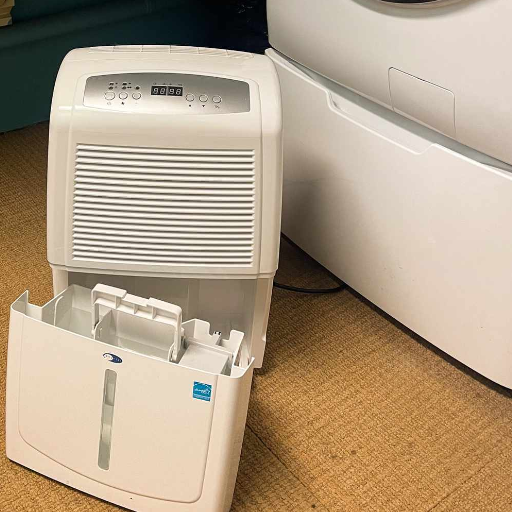
Even if a dehumidifier enables an individual to eliminate excess humidity in the bathroom, it still does not substitute for the bathroom fan. A bathroom fan is built to expel moist air directly out of the building instead of circulating it, so it is far more efficient at preventing condensation and lowering the chances of mold. A Dehumidifier does not deal with the problem of dew point temperature suppression at high humidity or during specific activities like showering. Ideally, there should be a bathroom ventilator machine and a dehumidifier for conditions that most require it.
Pros of using a dehumidifier in the bathroom
In some cases, though a dehumidifier in the bathroom seems detrimental, it can prove to be helpful. It assists in curtailing excess humidity buildup quickly in a bathroom with insufficient ventilation or if a fan alone is inadequate. A Dehumidifier also decreases the chances of mold and mildew growth by enabling constant relative humidity levels in the area. Generally, using a dehumidifier in the bathroom increases overall comfort and hygiene in constantly humid spaces while enhancing many other moisture control methods.
Cons of using a dehumidifier instead of a fan
Though dehumidifiers effectively reduce moisture content, they also bring some negatives compared to fans. First, dehumidifiers usually consume more power than fans, increasing energy bills. Also, some maintenance is needed, such as emptying the tank or checking for proper drainage, which can be bothersome. Since humidifiers are built for removing moisture and not for cooling, they are poor at enhancing airflow or lowering room temperatures immediately. Lastly, while their initial expense is higher than that of most fans, that, too, may become a concern for some households. Given these circumstances, fans become a more sensible option where energy consumption, money, and quick air circulation are the primary concerns.
Factors to consider when choosing between the two
I put the different desires of the environment first when choosing between a fan or a dehumidifier. When the objective is ventilating a room or cooling one instantly, I choose fans, as they are cost-effective and energy-efficient. But, a dehumidifier is my choice when an area needs to be stripped of moisture, such as a humid basement or damp weather, as it lowers the humidity and prevents mold buildup. All in all, I account for things like budget, the severity of the problem, and the room’s purpose to make the most reasonable decision.
How do dehumidifiers and exhaust fans affect bathroom ventilation?
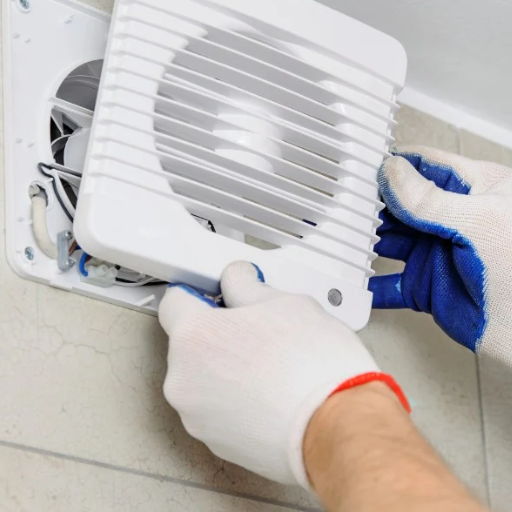
Dehumidifiers and exhaust fans are critical to removing excess moisture from the bathroom. However, their operation varies significantly. Exhaust fans pull humid air from the toilet and discharge it into the outside atmosphere, increasing air movement and decreasing condensation. Dehumidifiers pull moisture from the air inside the bathroom and either store it in a tank or send it to a drain. Exhaust fans may be better for instant moisture removal than a dehumidifier, which sustains the humidity level over an extended period. Choosing between the two depends on the bathroom ventilation and moisture control requirements.
Impact on air circulation and humidity levels
Adequate ventilation ensures the air is constantly revolving and the humidity in a bathroom is on point. While using exhaust fans, humid developers will quickly eliminate the damp, smelly air, allowing clean air to enter. They also significantly reduce the possibility of mold growing or any materials getting damaged due to the high amounts of moisture within the room. Additionally, dehumidifiers help prevent water from accumulating within the bathroom by controlling the humidity level in the area. To enhance the capability, exhaust fans should be installed according to the required CFM of the bathroom space, which is 1 CFM per foot of square footage. Compared to bathrooms with good ventilation, dehumidifiers are better in places where stagnant moisture is an issue. When used efficiently, dehumidifiers and exhaust fans significantly improve air quality within the room and reduce the chances of dampness.
Dealing with condensation and mold prevention
I ensure the indoor humidity does not exceed sixty percent to avoid condensation, moist air, and mold. I also promptly fix any water leaks or spills and ensure my home has sufficient ventilation. I install an appropriately sized exhaust fan for heavily constricted spaces, such as my bathroom. If the space still has insufficient moisture control, I use a dehumidifier. This way, I efficiently minimize the chances of dampened areas, grout, seals, and window frames pooling moisture. I also regulate the areas with the earliest signs of growth so they do not develop further. Implementing these measures can significantly diminish condensation and mold in my home.
What are the installation requirements for each option?
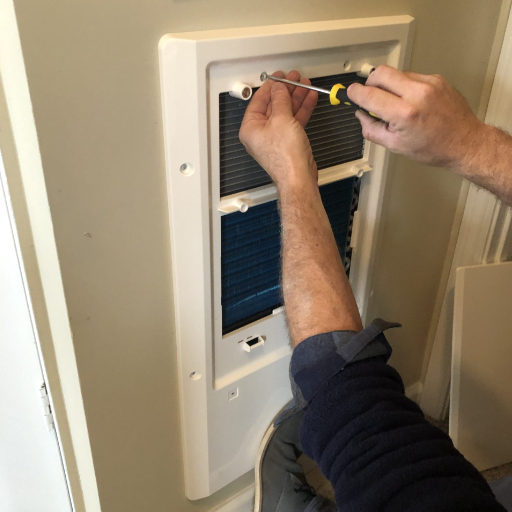
- Spray Foam Insulation
Spray foam installation requires specialized equipment and trained professionals to ensure proper application. The process involves spraying the foam onto surfaces, expanding, and hardening to fill gaps. Due to the chemical components involved, adequate ventilation during installation is critical.
- Fiberglass Insulation
Fiberglass insulation can be installed as batts or loose-fill. For batts, precise cutting and fitting are necessary to avoid gaps. Loose-fill insulation requires a blower machine for even distribution. Proper protective gear, such as masks and gloves, is essential to prevent irritation from fiberglass particles.
- Smart Home Systems
Installing smart thermostats or automation systems typically requires basic electrical wiring knowledge. Devices must be connected to the home’s HVAC system and linked to a compatible Wi-Fi network for remote operation. User-friendly interfaces simplify setup, but professional installation is recommended for seamless integration.
Dehumidifier placement and maintenance
Proper positioning and maintenance of a dehumidifier are essential to ensuring its optimal performance and longevity. Central locations within the intended space are ideal to ensure that flat, stable ground is available away from walls or furniture to facilitate the proper flow of air. The dehumidifier should also be placed away from areas prone to dust or heaters.
Regular maintenance entails manually removing the water collection tank or connecting a hose for continuous drainage. Preemptively cleaning the air filter according to the manufacturer’s instructions will significantly improve airflow and particle accumulation. Also, check the coils occasionally for any frost or dust build-up. The ventilation grilles should not be obstructed. In larger spaces with high humidity, selecting a sufficiently powerful dehumidifier is necessary to balance indoor moisture content effectively.
Exhaust fan installation and venting considerations
As for the exhaust fan, I ensure the room’s CFM, an acronym for cubic feet per minute, is checked. The room size and purpose dictate everything. Most importantly, I position the fan close to whether the moisture/odor is coming from showers or cooking. This provides maximum efficiency. Also, the venting is significant because I use exterior vents. This tends to expel moisture and air outside while combating mold or damage to the structure. This also helps me avoid venting into attics or other areas like inside. In doing this, I can solve issues arising in the long run.
Which option is better for small bathrooms?

In general, small bathrooms are more efficiently serviced with an exhaust fan. Its size means it can appropriately deal with odors and moisture without taking up usable space. In such cases, calculating the CFM appropriate for the room means that the fan will be the right size and provide adequate ventilation. Also, its proper mounting and venting always make it easy and cost-effective to control the air quality and moisture problems in small areas.
Space-saving solutions for compact bathrooms
While maximizing the small area of a bathroom, remember that there are several ways in which space can be maximized. Sanitary wares like sinks and toilets can be fixed on walls. This is because these appliances are ideal for flooring space and also provide the room with an airy appearance. Corner vanities and other compact storage appliances use unused spaces in the room instead of making the room seem cluttered. Shower tubs and curbless showers are also space-saving as they serve multiple functions. Mirrors with cabinets can also make a room look bigger by reflecting the light in the room while saving space. Even sliding doors can be used in place of the traditional ones. These approaches cater to the problem of efficient space use in small bathrooms.
Noise levels and privacy concerns
In small spaces, deciding on the materials to use and the noise level in that space requires a purposeful strategy. From my research, applying acoustic panels or thick soundproofing insulation enables transmission loss to approximately 20 decibels, which minimizes sound transfers between enclosed spaces. Additionally, installing solid-core doors with soundproofed frames maximizes sound isolation. However, privacy concerns can be achieved by using frosted glass and window films, allowing natural light to flood in while blocking outside characters. These solutions align with expert recommendations, thus effectively and practically enhancing comfort in small living spaces.
Can I combine a dehumidifier and an exhaust fan for optimal results?
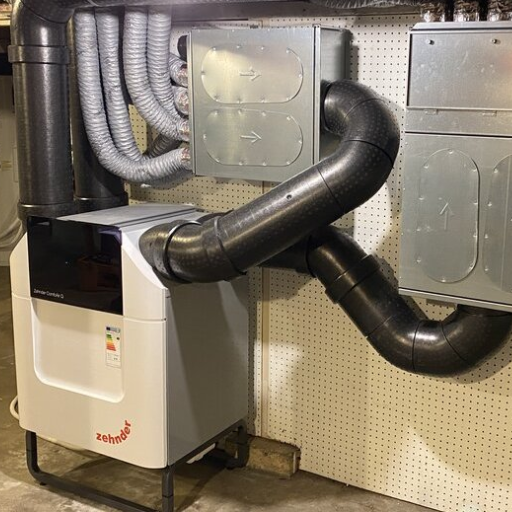
For maximum results, a combination of dehumidifiers and exhaust fans will provide the best results for humidity levels. While the dehumidifier consistently manages moisture levels, the exhaust fan eliminates humidity-filled air after showers. This method of moisture removal drastically reduces air pollution while significantly reducing the chance of mold formation. Additionally, seating for both devices in a single room will increase their effectiveness with proper ventilation.
Benefits of using both devices together
Combining exhaust fans and dehumidifiers addresses many core problems that lead to excessive indoor moisture. For instance, setting up these two devices in a single room directly tackles mold, mildew, and air pollution for structural damage while enhancing indoor air quality. Dehumidifiers consistently manage air moisture throughout the day, while exhaust fans increase ventilation by removing moisture-filled air the moment it’s created. These devices ensure baseline comfort while improving air quality and material durability. Their combined approach becomes even more effective through proper maintenance and installation.
Tips for integrating both systems effectively
A meticulous approach to the location of the exhaust fan is required, so I suggest you start by using a hygrometer to pinpoint the areas of the highest moisture concentration in your home. This will likely include the bathrooms, kitchen, or basement. The fan should be placed above the humid area as it needs to be able to remove air from the space efficiently. The dehumidifier should be placed in the other corner of the room, enthusiastically indicating the proper spot while not hampering the airflow from the dehumidifier. Set the hygrometer to below 50% so the device turns on when humidity moisture is detected at that range. Carefully ensure that the devices are serviced by regularly checking filters and vents. Keeping the two units working in unison will strengthen indoor air quality as these measures should be sufficient.
References
Frequently Asked Questions (FAQ)
Q: What is an extractor fan, and how does it work in a bathroom?
A: An extractor fan is a ventilation device that removes moist air and odors from the bathroom. It works by drawing humid air out of the room and expelling it outside, helping to prevent dampness and mold growth. Extractor fans are typically installed in the ceiling or wall and are activated when you turn on the bathroom light or manually via a switch.
Q: How does a dehumidifier work in a bathroom?
A: A bathroom dehumidifier works by drawing in moist air, cooling it to condense the water vapor, and then collecting the water in a tank or draining it away. It then releases dry air back into the room. This process helps to reduce humidity levels and prevent dampness, mold, and mildew growth in the bathroom.
Q: Is an extractor fan or dehumidifier better for bathroom ventilation?
A: Generally, an extractor fan is considered better for bathroom ventilation. It removes moist air and odors from the room, replacing it with fresh outside air. A dehumidifier, while effective at reducing humidity, doesn’t provide ventilation. However, in some cases, using both can benefit optimal moisture control.
Q: Can I use a dehumidifier instead of an extractor fan in my bathroom?
A: While a dehumidifier can be used in a bathroom, it’s not an ideal replacement for an extractor fan. Dehumidifiers effectively reduce humidity but don’t provide ventilation or remove odors. They also require more maintenance and energy to operate. An extractor fan is recommended for proper bathroom ventilation, but a dehumidifier can be a helpful addition in particularly damp bathrooms.
Q: How do I know if I need an extractor fan or a dehumidifier for my bathroom?
A: If your primary concern is removing steam and odors quickly after showers, an extractor fan is the better choice. A dehumidifier might be beneficial if you have persistent dampness issues, even with proper ventilation. Consider factors like bathroom size, existing ventilation, and moisture levels. An extractor fan and a dehumidifier can sometimes provide optimal moisture control.
Q: What are the advantages of using an extractor fan in the bathroom?
A: Extractor fans offer several advantages for bathroom ventilation: they quickly remove moist air and odors, prevent condensation on mirrors and surfaces, reduce the risk of mold and mildew growth, and improve overall air quality. They’re also energy-efficient, relatively low-maintenance, and easily integrated into your bathroom’s electrical system.
Q: What are the benefits of using a dehumidifier in a bathroom?
A: Using a dehumidifier in a bathroom can help maintain optimal humidity levels, prevent mold and mildew growth, reduce musty odors, and protect bathroom fixtures and paint from moisture damage. Dehumidifiers are particularly useful in bathrooms with poor ventilation or in humid climates. They can also help dry damp towels and bathmats more quickly.
Q: How can I improve bathroom ventilation if I can’t install an extractor fan?
A: If you can’t install an extractor fan, there are several alternatives to improve bathroom ventilation: use a portable fan to circulate air, keep the bathroom door open after showers, open windows when possible, use a dehumidifier to reduce moisture, wipe down surfaces after use, and consider using moisture-absorbing products like silica gel or activated charcoal. However, these methods may be less effective than a properly installed extractor fan.

